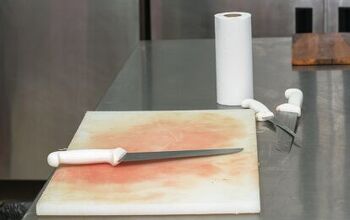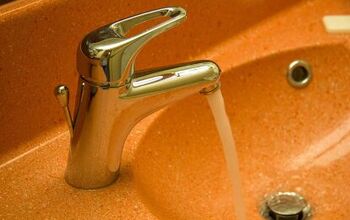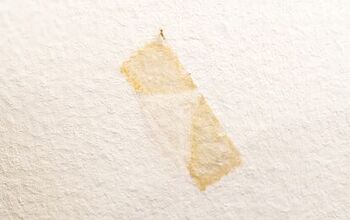How To Remove A Stripped Bolt (Step-by-Step Guide)

Bolts are used to provide heavy-duty security. When bolts are implemented, it is because the device or machine in question faces heavy torque and the bolted piece cannot be allowed to move. Bolts provide the peace of mind needed to ensure that your device is secured.
From time to time, bolts can become stripped, rusted, or otherwise damaged. When that happens, it can be quite difficult to remove said bolt. Thankfully, there are quite a few methods that you can use. Try using heat, blunt force, a drill, a chisel, and a variety of other solutions depending on the tools you have on hand and your particular skill set.
Do You Need Handyman Services?
Get free, zero-commitment quotes from pro contractors near you.

What Causes a Bolt to Strip?
While we know that bolts can become stripped, it can be helpful to know why so as to avoid it in the future. There are a few common reasons why your bolt may become stripped, though it typically doesn’t get noticed until it’s too late.
- Over-tightening. The most common reason why your bolt may become stripped. When you over-tighten a bolt, there is immense pressure on the threads of said bolt. When you exceed the maximum force allowed on the threads, they will become deformed and strip it as a result.
- The wrong material. This is similar to over-tightening in that certain materials have qualities that make them good or bad for certain tightening situations. When you choose a metal that is too soft or hard, it could interact badly with the material that is being installed. In the end, it compromises the integrity of the bolt, stripping and damaging it.
- Galling. Galling technically isn’t stripping but it is quite similar. This is where the threads rub up against one another and heat up. Galling happens when those overheated threads then fuse with one another, ultimately becoming stuck.
- Wrong size wrench or socket. What far too many people don’t realize is that the wrong size wrench or socket can contribute to stripping just as anything else. The extra wiggle room creates uneven force on those bolt edges, meaning more force will be applied to one side than the other. Uneven wear and tear can lead to stripping of the bolt.
Step 1: Use Blunt Force
It may not be the fanciest of methods but sometimes there’s no better way of dislodging something than simply whacking it as hard as you can. In most cases, hitting stubborn bolts should pop them out before too long.
But don’t just simply hammer on the bolt and expect to pop it off. Use a punch or a chisel at the center of the head, hitting the other end with a rubber mallet or hammer. You can even use an impact wrench, hitting the bolt a few times in both forward and reverse. Just remember that this is best on bolts that have lightly seized but may not be a universal solution.
Step 2: Heat the Problem
Basic science can come in handy more often than you think. Metal, when heated and given time to cool, will expand and then rapidly contract. And it is this basic principle that can help you to remove stripped bolts more easily.
Heat the head and body of the bolt until it is nearly red hot. The purpose here is to expand the metal so that when it cools and contracts, it will break the corrosion bond that exists between the threads. It cannot be emphasized enough that extreme caution should be used whenever dealing with heat, so use your head.
When the metal has had a chance to cool off, use an impact wrench to break loose the stripped bolt. You can also use penetrants to help aid the removal as well.
Step 3: Rock the Bolt
“Rock the bolt, don’t rock the boat baby…” If you’re going to try this method, make sure that you do it early on in the process and in tandem with another method. This process is about using the ratchet and socket to slowly work the nut or bolt back and forth.
As you loosen the bolt a little, getting some tension behind it, change directions and turn it back to where you started. Keep doing this, changing directions each time and spraying some penetrant after each pass to help loosen up the threads. This might be one of the slower methods out there, but it is also one of the most effective if you can have a little patience.
Step 4: Relief Cuts
If you’re looking for a “sure-fire” method for getting a stripped nut or bolt out, this is as close as it gets. It’s not clean in any respect but it generally will be a faster method for getting out those stubborn bolts. This method involves putting two or three cuts in at the bolt head or to the nut.
The goal of relief cutting is to cut away just enough that you get through the entirety of the nut or head of the bolt. After making the cuts, hit them using a chisel and hammer a couple of times. If successful, you will either relieve the tension or split the bolt or nut entirely.
In most cases, relief cuts will allow you to use locking jaw pliers to grab the head of the bolt and turn, but results can vary.
Step 5: Drill It
Drilling follows the same basic concept of relief cuts, though there are some minor variances. This tends to be more of a last-ditch effort, especially if the bolt has broken off but the break is flush with the surface of the material.
Use a small drill bit to drill all the way through the length of the bolt. This works because it heats the bolt and also creates a hollow portion in the bolt that contracts when it cools. The downside here is that you may have to keep stepping up the size of the drill until you find the right size. When finished, you can simply break the bolt apart in the hole using a chisel and remove the pieces.
Step 6: Use an Air Chisel/Hammer
This method actually combines a couple of the aforementioned methods and works well when the bolt head has become stripped. An air hammer and chisel are meant to be used on either the bolt or nut and will loosen up the bolt.
The best use of an air hammer and chisel is if the nut or bolt is in an open area. In tight spaces, it may be difficult to maneuver this tool into the appropriate position. That can mean more frustration when trying to remove the bolt.
Step 7: Weld It
Should the bolt head or nut be so stripped that it won’t turn at all even when using locking jaw pliers, welding may be the way to go. It may also be the solution if the head has completely broken away from the rest of the bolt.
All you do is get a slightly larger nut and bolt and then tack weld it to the body of the bolt. When you have done that, fill the nut with weld and then run a bead at the base where it connects to the body of the bolt.
This method lets you put a socket back on the bolt and also heats the bold to allow for the necessary expansion and contraction. Moreover, it breaks some of the corrosion along the way. Welding can be a scary proposition for the inexperienced, so use caution.
Step 8: Use a Pipe Wrench
While this is one of the most basic methods out there, it can also be one of the most effective. Moreover, a pipe wrench is commonly found in most shops and workbenches.
All you need to do is tighten the pipe wrench down over the nut or bolt. The more that you torque on it with the pipe wrench, the harder that the wrench will grab down onto the head of the bolt. With some patience and enough torque, the bolt should come free eventually.
Step 9: Screw or Bolt Extractor
While there is a designated tool for extracting bolts and screws, some work well and others don’t. This tool works by grabbing onto the hardened bits within the nut or bolt in order to remove it. In some instances, you may have to drill a small hole first and then thread the extractor.
Whatever the case, it is imperative that you do not break the extractor off inside of the hole. As bad as removing the bolt was before, it will be 10 times worse.
Do You Need Handyman Services?
Get free, zero-commitment quotes from pro contractors near you.

A Worthwhile Tip: Loosen all of the Surrounding Nuts and Bolts
While this may not actually lead to the bolt coming out entirely, it never hurts to make things a little easier on yourself. In some instances, loosening the nuts and bolts surrounding the problem bolt can help alleviate the pressure.
Just make sure that you either take pictures or check the repair manual for any installation and removal order. By removing the force surrounding the trouble bolt, it may be just enough to allow you to pop it out with a bit more ease.

Ryan Womeldorf has more than a decade of experience writing. He loves to blog about construction, plumbing, and other home topics. Ryan also loves hockey and a lifelong Buffalo sports fan.
More by Ryan Womeldorf



























